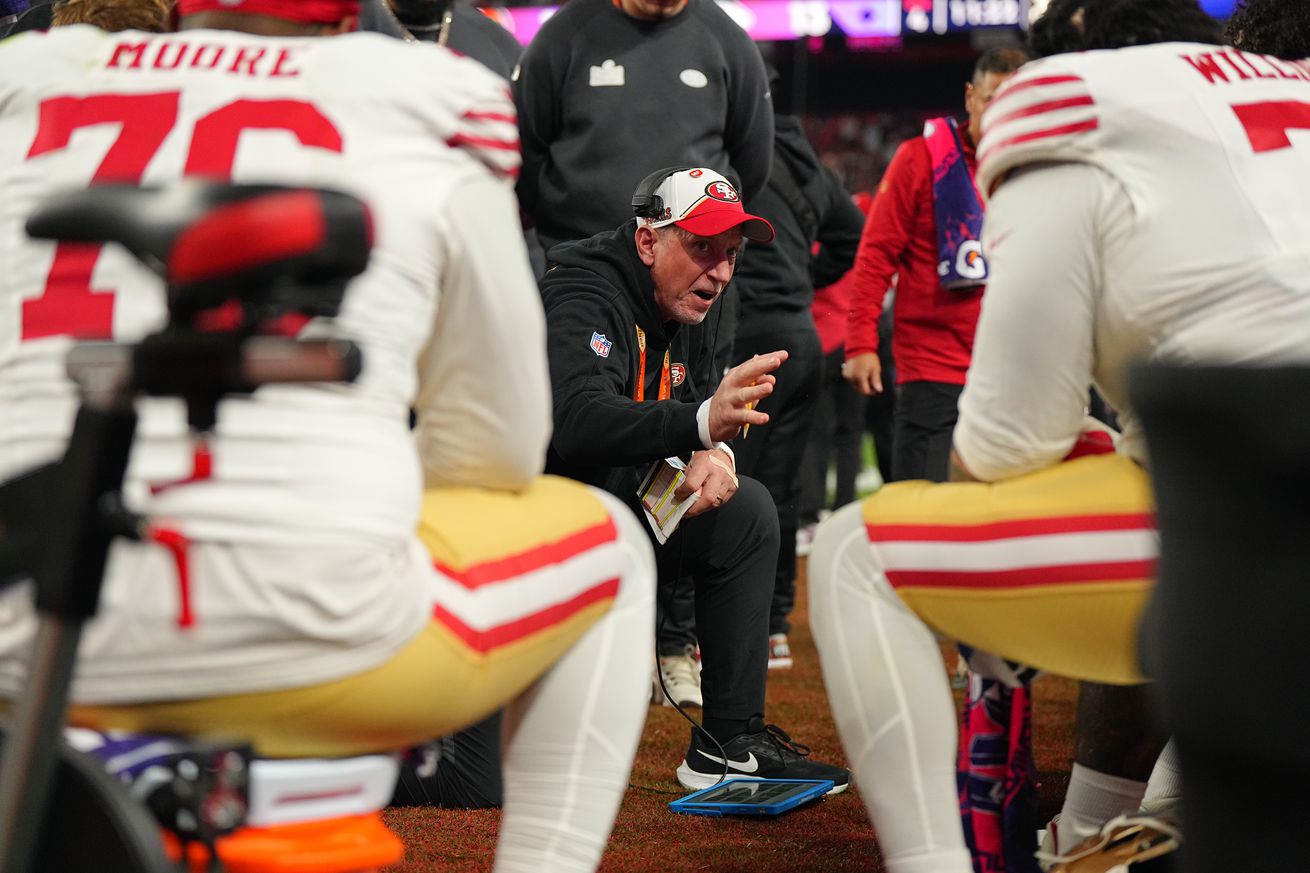
San Francisco 49ers OL coach Chris Foerster also explained why he looks at traits and not athletic testing numbers
Everybody wants to know what the San Francisco 49ers think of their third-round pick, Dominick Puni, and his expectations for heading into his rookie season. Puni figures to compete with Spencer Burford—the most talented yet inconsistent right guard.
Puni was running with the second team at right guard early in OTAs. But that doesn’t mean he’ll be relegated to backup duty all season. Offensive line coach Chris Foerster explained what he liked about Puni coming out of the draft and compared and contrasted him to the Niners’ starting left guard, Aaron Banks:
“You didn’t see a lot on tape that was what we do. But you saw in his testing, and you saw glimpses of it on tape. He is one of those guys that, we’ve talked about a lot of times, where you look at him and you’d say, ‘Gosh, is that guy for you?’ We drafted [OL Aaron] Banks and it was the same way.
You would go, ‘Gosh, this is a big old guard from Notre Dame. Is he really going to fit?’ But then you watch him run some screens and you see some things and go, ‘Oh yeah, if we start doing it every day.’ So, this is a big guy that has some size. He also has some quickness, some power. He’s not the prototypical little quick guy, he is a guy that’s got the size range and length.
One of those guys that will be holed up on third down, he was a very good pass blocker in college, that should translate to our game. And then, getting him to do our run game is going to be his biggest adjustment. So just all the traits that we need in our system. It didn’t jump off the tape, but it was there.”
The quicker Puni adjusts to what the 49ers ask him to do in the running game, the sooner he’ll see the field. Puni’s positional flexibility will help if there’s an injury, but Foerster acknowledged that Puni was built to play guard:
“He’s played guard and tackle, I think. I don’t know, he might’ve even played center at some point, but he’s built to be a guard. Now does that not mean he won’t be our fourth tackle possibly the way the roster shakes out? Could he be our starting right guard or left? He could be a swing guard. The only thing, I’m not sure I’m going to rep him at is center, but he’s going to be able to play left guard, left tackle, right guard, right tackle.
We’ll primarily work him at right guard right now. That’s a place we felt we could get some competition going and work at that spot. But he easily could be the fourth tackle, third. He could work in anywhere there. He’s got ability to play all. He’s best suited to guard though. You never know what happens. We’ll see how it plays out.”
Lastly, Foerster was impressed with the short shuttle times by his rookies but insisted that it was their traits, not athletic testing, which led the 49ers to draft them:
“Yeah, that was interesting. I know somebody sent it to me. I think whoever put out there, whatever, I don’t have any of those social media things, but somebody sent it to me, and I saw it and said, ‘that’s cool.’ But I think it’s more of the traits. We see the traits in the player, and it just so happens to translate.
Now, a short shuttle to me is a science. Short shuttle, you can train the kid to run a short shuttle. There’s a thing to the feet, the hands. I don’t know what it is, but literally they can just by training it properly, knock time off it, that doesn’t demonstrate as much of their core skills, right? The three-cone drill has a little harder. It doesn’t matter how technical you are.
There’s so much start and stop and weaving. I go a little bit more on the three-cone personally. But it’s funny that the short shuttle, it obviously must have some carryover because these things that I talked about that we see on tape that you don’t see our plays, but you see the traits of the player. It must be something that’s good in the short shuttle as well.
So, it wasn’t something we pinpointed. I’ve been with a lot of personnel people that go like, look, if an offensive lineman doesn’t have a short shuttle like this, we’re not taking them. Or if a tight end doesn’t have a 20 of this or a three-cone or vertical jump, they won’t take them because over time that’s what analytics does.
They just chart on a graph and say, ‘look, these guys that are under this number or above this number don’t make it.’ And so, they say, ‘why would we take them because odds are they don’t make it.’ That’s a little too analytical, but it’s a good jump off spot to say, boy, they better show some other things to say they’re going to. So that was an interesting stat. It makes me look at it a little bit. It’s just interesting to see how it showed up. It was cool.”
Foerster is always a fascinating interview, and he was no different during this past OTA media availability.